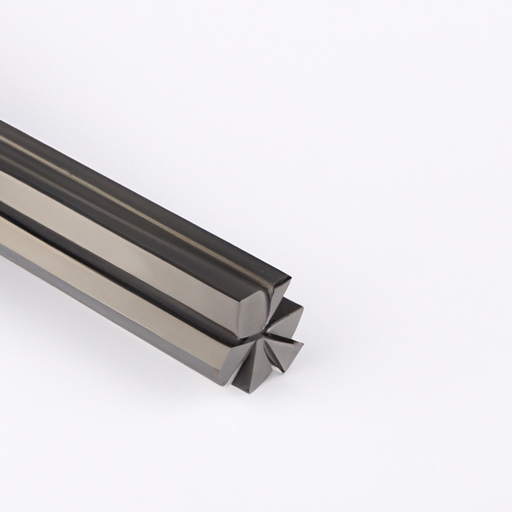
What is the Material of Self-Rolling Textile Casing?
Introduction
In the world of textiles, innovation is a constant driving force. One of the most intriguing advancements in this field is the development of self-rolling textile casings. These innovative materials have garnered attention for their unique properties and applications, ranging from fashion to industrial uses. But what exactly are self-rolling textile casings, and what materials are used to create them? In this blog post, we will explore the composition, functionality, and potential applications of self-rolling textile casings, shedding light on this fascinating topic.
Understanding Self-Rolling Textile Casings
What Are Self-Rolling Textile Casings?
Self-rolling textile casings are specialized fabrics designed to automatically roll or fold themselves when certain conditions are met. This self-rolling mechanism can be triggered by various factors, such as changes in temperature, humidity, or mechanical stress. The primary purpose of these casings is to provide convenience and efficiency in various applications, including packaging, storage, and even fashion.
How Do They Work?
The self-rolling mechanism is typically achieved through the use of smart materials, which respond to external stimuli. These materials can change their shape or properties in response to environmental changes. For instance, a textile casing may be made from a polymer that contracts when heated, causing the fabric to roll up. Alternatively, it may utilize a combination of materials that work together to create the desired rolling effect.
Materials Used in Self-Rolling Textile Casings
1. Smart Polymers
Smart polymers are at the forefront of self-rolling textile technology. These materials can undergo significant changes in response to environmental stimuli. Common types of smart polymers used in self-rolling textile casings include:
Thermoresponsive Polymers: These polymers change their shape or properties when exposed to heat. For example, a thermoresponsive polymer may expand at lower temperatures and contract when heated, allowing the textile to roll up.
Hydrogels: Hydrogels are water-absorbent polymers that can swell or shrink based on moisture levels. In self-rolling textiles, hydrogels can be incorporated to create a rolling effect when the humidity changes.
Shape Memory Polymers (SMPs): SMPs can "remember" a specific shape and return to it when triggered by heat or other stimuli. This property makes them ideal for creating self-rolling mechanisms in textiles.
2. Nanomaterials
Nanotechnology has revolutionized many fields, including textiles. Nanomaterials can enhance the properties of self-rolling textile casings in several ways:
Increased Strength: Incorporating nanofibers or nanoparticles can improve the tensile strength of the fabric, making it more durable and resistant to wear and tear.
Enhanced Responsiveness: Nanomaterials can be engineered to respond more quickly to environmental changes, allowing for faster rolling or folding actions.
Functional Coatings: Nanotechnology can be used to apply functional coatings to textiles, such as water-repellent or antimicrobial properties, further enhancing their usability.
3. Traditional Textile Fibers
While smart materials and nanotechnology play a significant role in self-rolling textile casings, traditional textile fibers are still essential components. Common fibers used in these applications include:
Cotton: Known for its breathability and comfort, cotton can be blended with smart materials to create self-rolling textiles that are both functional and comfortable.
Polyester: This synthetic fiber is durable and resistant to shrinking and stretching, making it an excellent choice for self-rolling applications.
Nylon: Nylon is known for its strength and elasticity, which can contribute to the effectiveness of self-rolling mechanisms.
Applications of Self-Rolling Textile Casings
1. Fashion and Wearable Technology
Self-rolling textile casings have the potential to revolutionize the fashion industry. Imagine garments that can adjust their fit based on body temperature or activity level. Designers are already experimenting with self-rolling fabrics to create clothing that adapts to the wearer’s needs, providing comfort and style in one package.
2. Packaging Solutions
In the realm of packaging, self-rolling textile casings can offer innovative solutions. These materials can be used to create packaging that automatically rolls up when not in use, saving space and reducing waste. This is particularly useful for products that require protective casings, such as electronics or fragile items.
3. Medical Applications
Self-rolling textile casings have potential applications in the medical field as well. For instance, they can be used in bandages that automatically adjust to the size of a wound, providing optimal coverage and support. Additionally, smart textiles can monitor vital signs and provide real-time feedback to healthcare providers.
4. Home and Interior Design
In home decor, self-rolling textile casings can be used for curtains, blinds, and other window treatments that automatically adjust based on light levels or temperature. This not only enhances convenience but also contributes to energy efficiency by regulating indoor temperatures.
Challenges and Future Directions
1. Cost and Production
One of the primary challenges facing the widespread adoption of self-rolling textile casings is the cost of production. Smart materials and nanotechnology can be expensive to manufacture, which may limit their accessibility for some applications. Researchers are actively working on developing more cost-effective methods for producing these materials.
2. Durability and Longevity
While self-rolling textile casings offer exciting possibilities, their long-term durability remains a concern. Ensuring that these materials can withstand repeated use and environmental changes without losing their functionality is crucial for their success in various applications.
3. Environmental Impact
As with any new technology, the environmental impact of self-rolling textile casings must be considered. Researchers are exploring sustainable materials and production methods to minimize the ecological footprint of these innovative textiles.
Conclusion
Self-rolling textile casings represent a fascinating intersection of technology and textiles. By utilizing smart materials, nanotechnology, and traditional fibers, these innovative fabrics have the potential to transform various industries, from fashion to healthcare. While challenges remain in terms of cost, durability, and environmental impact, ongoing research and development are paving the way for a future where self-rolling textiles become a common part of our lives. As we continue to explore the possibilities of these materials, the potential applications are limited only by our imagination.



